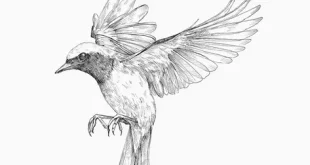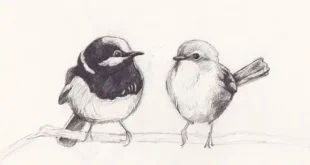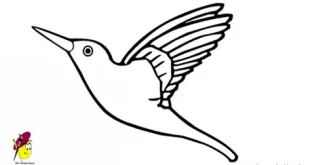What Makes Peregrine Falcon Birds Fastest Hunters in the USA
1. Introduction to Peregrine Falcon Birds
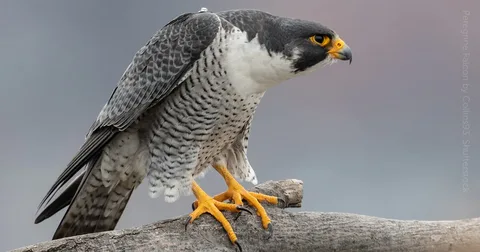
Peregrine Falcon birds are among the most admired raptors in the USA, known for their astonishing speed and precision. With flight speeds that can exceed two hundred miles per hour, they stand as the fastest animals on Earth. These remarkable hunters showcase strength, agility, and determination, inspiring awe across both urban and rural landscapes. In America, they are widely recognized not only for their hunting abilities but also for their role in ecosystems. By preying on pigeons, starlings, and other birds, they help balance populations naturally without human intervention. Bird enthusiasts, researchers, and conservationists view Peregrine Falcon birds as symbols of resilience and adaptability. Their increasing presence across many American states demonstrates a successful conservation story that continues to inspire future generations. They remain iconic, combining natural beauty with unmatched aerial mastery across the skies of the USA.
2. Historical Decline and Recovery in the USA
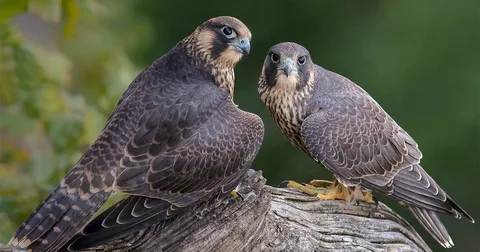
During the mid-twentieth century, Peregrine Falcon birds faced severe population declines throughout the USA due to pesticide use. Chemicals like DDT caused eggshell thinning, making it nearly impossible for chicks to survive hatching. By the late 1960s, these birds had vanished from many traditional nesting sites across the country. Their near extinction prompted urgent conservation programs, including banning harmful pesticides and introducing captive-breeding projects. Organizations like The Peregrine Fund played crucial roles in reintroducing birds into the wild across different American regions. Over decades, populations gradually recovered, and the species was officially removed from the Endangered Species List in 1999. This achievement became one of the most celebrated conservation successes in the USA. Today, the recovery of Peregrine Falcon birds serves as evidence that dedicated efforts can restore struggling species effectively. Their story continues to encourage ongoing environmental awareness across the country.
3. Peregrine Falcon Birds Physical Features and Hunting Skills
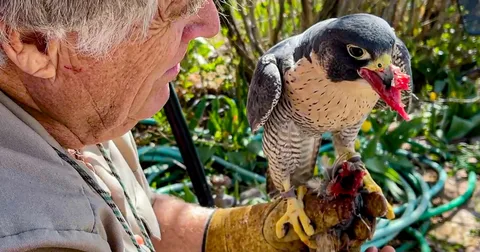
Peregrine Falcon birds possess physical characteristics that make them ideal hunters in American skies. Their streamlined bodies, long pointed wings, and strong talons enable incredible control during dives and rapid pursuits. With sharp eyesight, they can spot prey from over a mile away, ensuring accurate targeting before striking. During hunting dives, called stoops, these falcons achieve astonishing speeds, often striking prey midair with precision. Their diet mainly consists of smaller birds, but they occasionally target mammals and reptiles depending on habitat availability. Across the USA, observers admire their aerial stunts and efficiency as predators within both wild and urban settings. Their feathers provide natural camouflage, blending into cliffs or skyscrapers where they frequently establish nests. These features combined make Peregrine Falcon birds one of the most formidable hunters among raptors worldwide. Their extraordinary skills highlight both beauty and lethal efficiency in American wildlife.
4. Habitat and Distribution Across the USA
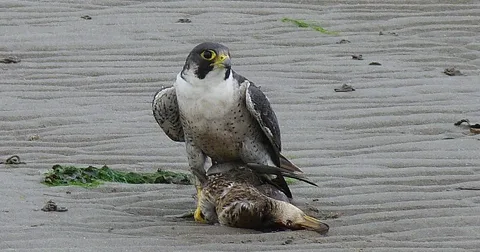
The habitat range of Peregrine Falcon birds is remarkably broad within the USA, showcasing adaptability unmatched by many species. Historically, they favored high cliffs near coasts, rivers, and mountains, where they could nest securely while accessing abundant prey. However, in recent decades, these falcons have also embraced cities, nesting on tall buildings and bridges. Urban environments provide abundant food sources, particularly pigeons and starlings, making cities thriving habitats for Peregrine Falcon birds. They are now found across most American states, from Alaska to Florida, adapting successfully to diverse ecosystems. Birdwatchers in major cities frequently observe them perched high above, watching traffic and scanning skies for potential prey. Their ability to thrive in both natural and man-made environments demonstrates resilience unmatched by many raptor species. This adaptability ensures their continued survival across the varied landscapes of the USA.
5. Conservation Importance and Future Outlook
The story of Peregrine Falcon birds in the USA emphasizes the importance of conservation efforts for maintaining ecological balance. Their successful recovery highlights the power of human intervention when combined with scientific research and community dedication. Continued monitoring remains necessary, ensuring pesticide regulations remain enforced and new threats are effectively addressed. Climate change and urban expansion pose challenges, yet these falcons continue proving their adaptability across changing environments. Public education programs encourage citizens to support conservation, while urban nesting cameras engage people with falcon life. Schools, universities, and wildlife groups highlight their story as one of resilience, inspiration, and environmental responsibility. The future of Peregrine Falcon birds in America depends on awareness, collaboration, and sustained protection of natural resources. Their legacy remains a shining example of how determined conservation can restore even critically threatened species in the USA.
 Birds Drawing Birds Drawing
Birds Drawing Birds Drawing

